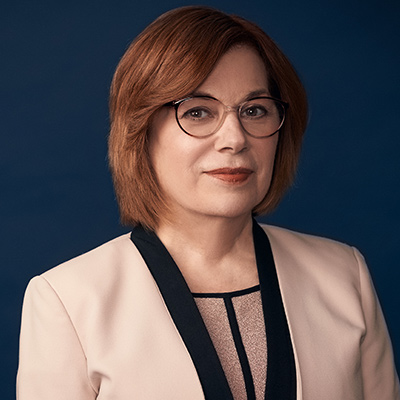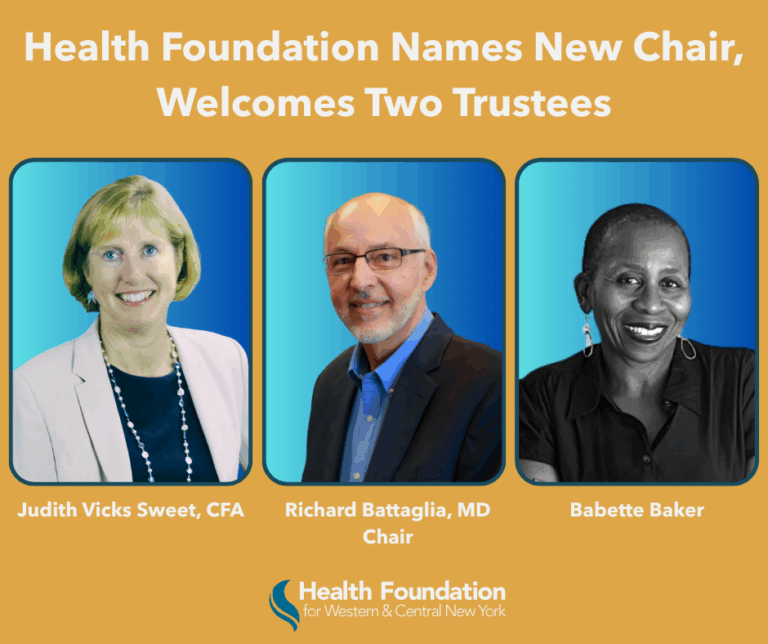By Nora OBrien-Suric, Ph.D.
President
 Despite great progress made in recent years to reduce the number of New Yorkers who lack health insurance, there are still more than 1 million uninsured people in our state. Many don’t realize, however, that almost two-thirds are income-eligible for either Medicaid or premium assistance through the state’s health plan marketplace created under the federal Affordable Care Act (ACA).
Despite great progress made in recent years to reduce the number of New Yorkers who lack health insurance, there are still more than 1 million uninsured people in our state. Many don’t realize, however, that almost two-thirds are income-eligible for either Medicaid or premium assistance through the state’s health plan marketplace created under the federal Affordable Care Act (ACA).
We believe everyone should have access to health care, and getting folks enrolled in an insurance plan they are eligible for is a common-sense way to start closing the gap between those who have insurance and those who don’t.
Thankfully, Maryland recently passed first-in-the-nation legislation that can serve as a beacon for New York and other states. The law is elegant in its simplicity. It doesn’t create a new bureaucratic program or require a huge expenditure of public funds. It simply makes it easier for those who are already eligible for public health insurance programs to get coverage.
Starting next year, tens of thousands of uninsured Maryland residents will be automatically enrolled in Medicaid or proactively get information about subsidized health insurance simply by checking a box on their state income tax return.
Reaching the Five Percent
The Health Foundation for Western and Central New York and United Hospital Fund (UHF) recently released a report, Reaching the Five Percent: A Profile of Western and Central New Yorkers Without Health Coverage, that illuminates how challenging it is for most people to navigate the enrollment process for public insurance programs without help.
A 2018 report by New York State of Health, the state’s ACA health benefit marketplace or “exchange,” found that only 17 percent of enrollees signed up for coverage directly through the website without help. The rest needed in-person assistance from an array of brokers, counselors, navigators, and customer service representatives.
The report analyzed 2017 census data to map the uninsured rate by age and income in the 16 western and central New York counties the Health Foundation serves. The “Five Percent” in the title refers to the number of New Yorkers who still lack health insurance.
The report found that uninsured rates vary dramatically. In western New York, for example, about 8.7 percent of Allegany County residents lacked health coverage, while just over 3 percent of Erie County residents were uninsured.
We also found that many uninsured western and central New Yorkers had incomes that would make them eligible for free or low-cost public health insurance through Medicaid, Child Health Plus (New York’s low-cost, comprehensive health insurance program for children under 19, which receives federal matching funds) or the state’s Essential Plan (created under the ACA to offer low-cost or no-cost comprehensive coverage for adults earning less than 200 percent of the federal poverty level.)
To ensure that the voices of real people were included in the report along with the data analysis, discussion groups were held in four counties. Participants identified several barriers to obtaining coverage, including the lingering stigma associated with public programs, the importance of having a knowledgeable enrollment counselor to help guide them through the process, and the need for education and outreach.
Picking Up the Torch
Under the new law in Maryland, that state’s uninsured rate is projected to drop from 6.1 percent to 4.1 percent. That would be a great first step toward closing the gap, and one New York would be smart to emulate.
Here’s how it works: A question will be added to state income tax forms in January 2020 asking in clear, simple language whether the tax filer has health insurance. When uninsured filers check a box indicating that they do not have coverage, their financial information will automatically be sent to the Maryland Health Benefit Exchange. The exchange—created in 2011 under the ACA as a one-stop shop to compare rates and buy health insurance, often with the help of government subsidies—will then determine whether they are eligible for free or low-cost health insurance.
Those who meet the income requirements for Medicaid will automatically be enrolled in the joint federal and state government program for the poor and disabled.
For those who make more than the Medicaid limits, the exchange will use the data to see if they qualify for a subsidized program. If the data provided does not establish eligibility, the exchange will proactively reach out to the tax filer and help them select an appropriate plan.
In these highly partisan times, especially when it comes to health care, it’s worth noting that the new law drew strong bipartisan support in both chambers of Maryland’s legislature. The bill, sponsored by two Democratic legislators, passed the Senate on a unanimous 46-0 vote, and the House of Delegates by a 123-15 margin, before it was signed into law by Republican Gov. Larry Hogan on May 13.
Proponents say that more than 100,000 uninsured Maryland residents could gain health insurance under the new law. In human terms, that means 100,000 fewer people living daily without the anxiety and uncertainty that comes with not being able to cover health care needs.
Before the ACA was signed into law by former President Barack Obama in 2010, about 12 to 13 percent of Maryland residents—or about 760,000 people—lacked health insurance. Largely as a result of the ACA, that number has already been cut by more than half to about 360,000, and the Maryland Easy Enrollment Health Insurance Program, as the new law is known, is expected to move about one-third of the state’s remaining uninsured into health coverage.
New York State’s uninsured rate of just over 5 percent in 2017 was lower than Maryland’s and all but seven other states. But we can—and must—do better.
Access to health insurance has a wide variety of benefits. First and foremost, it helps us stay healthier, but it also has a powerful economic impact, supporting our families and a more productive workforce. It is critical to creating stronger, more secure, more vital communities. We urge New York lawmakers to pick up the torch lit by Maryland and work together on a bipartisan, streamlined solution to continue to close the gap and ensure all of us have access to the affordable health insurance we need and deserve.


